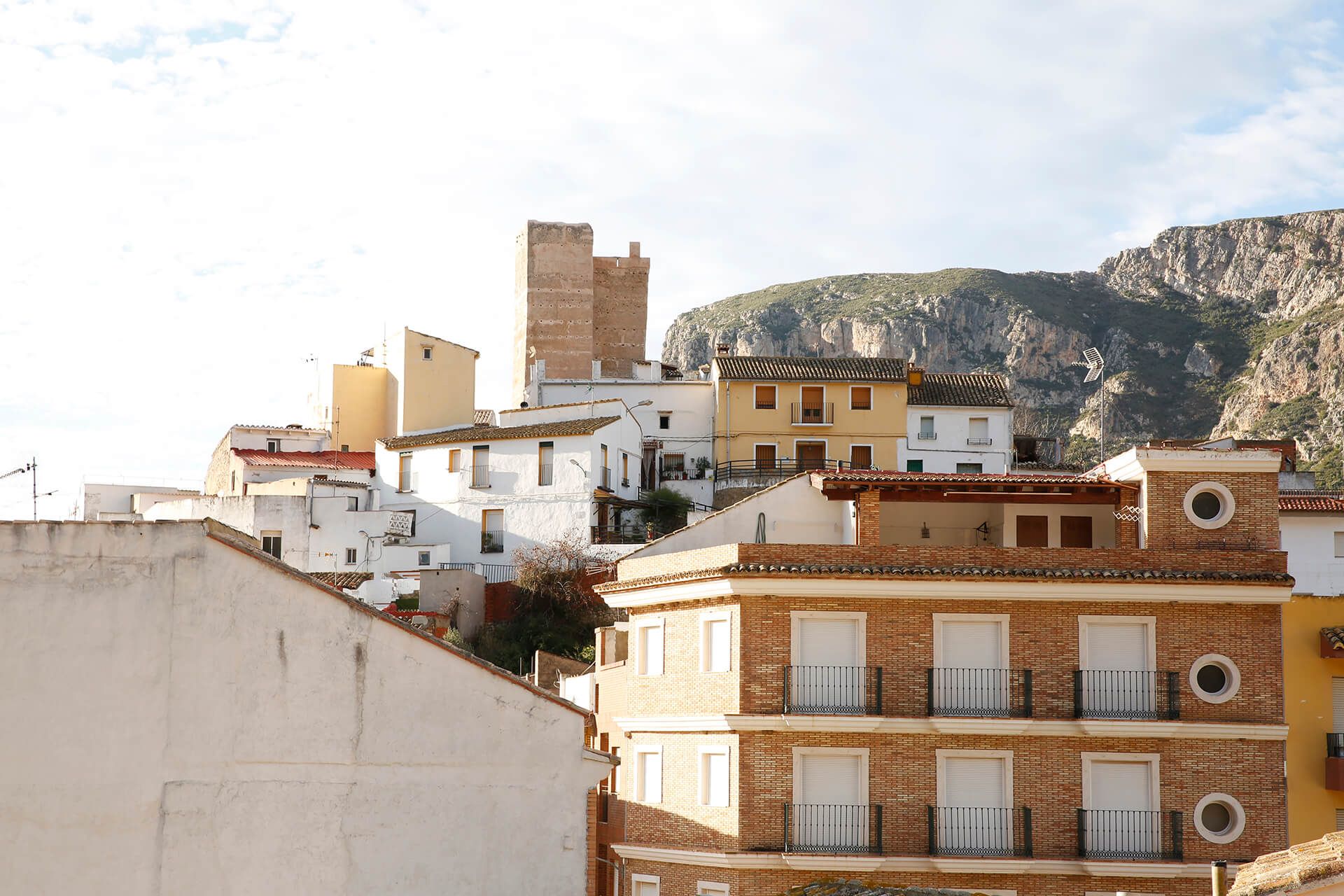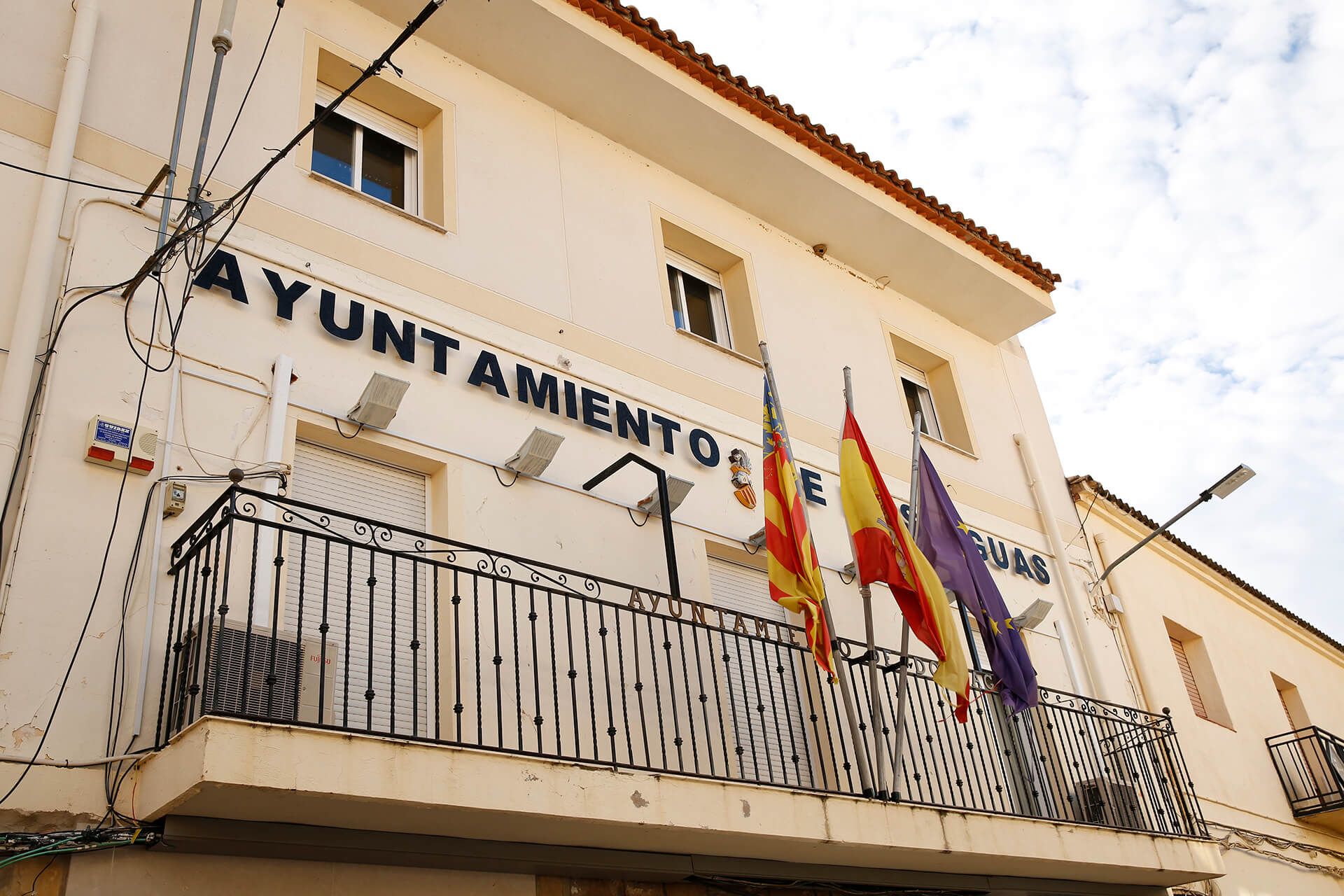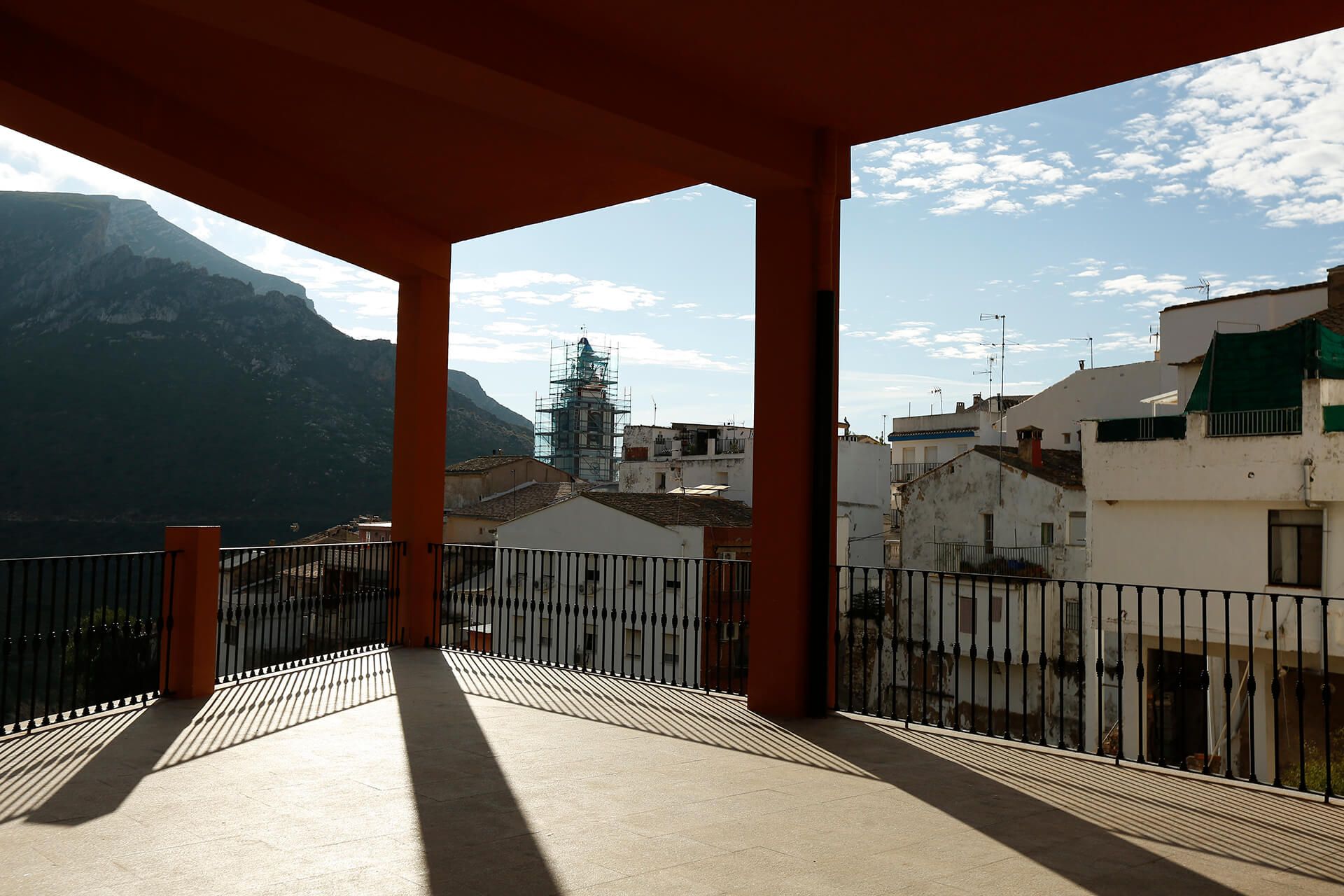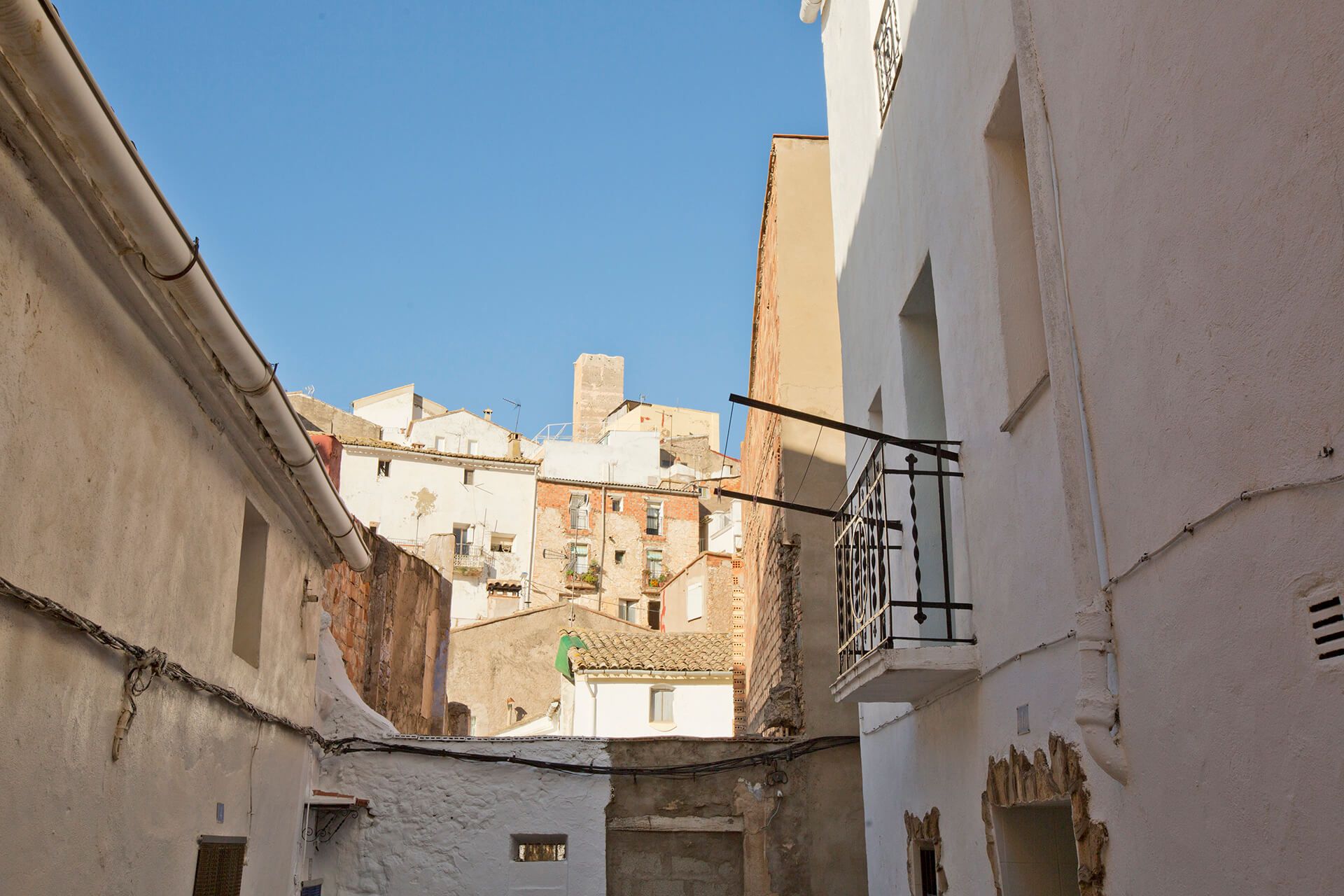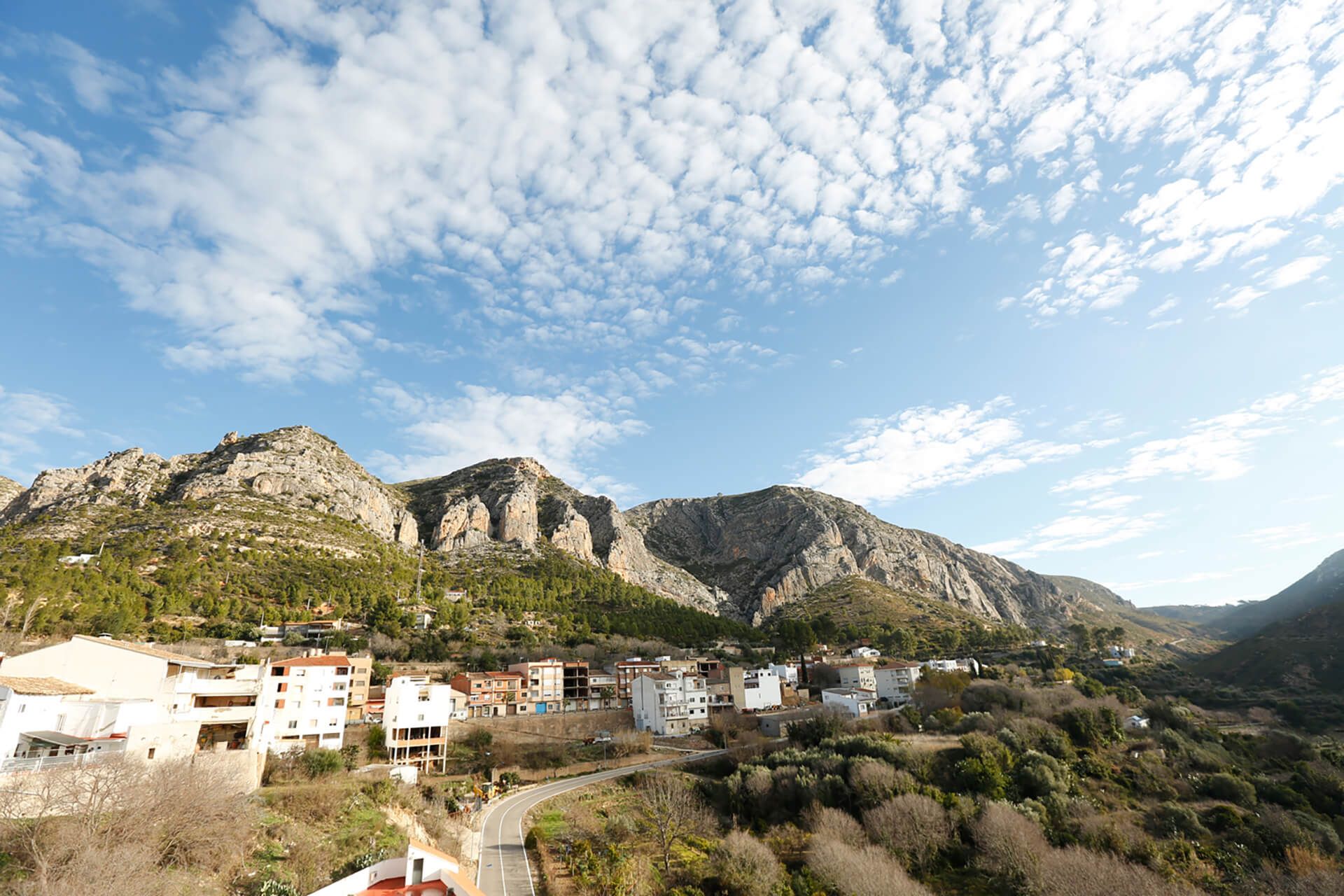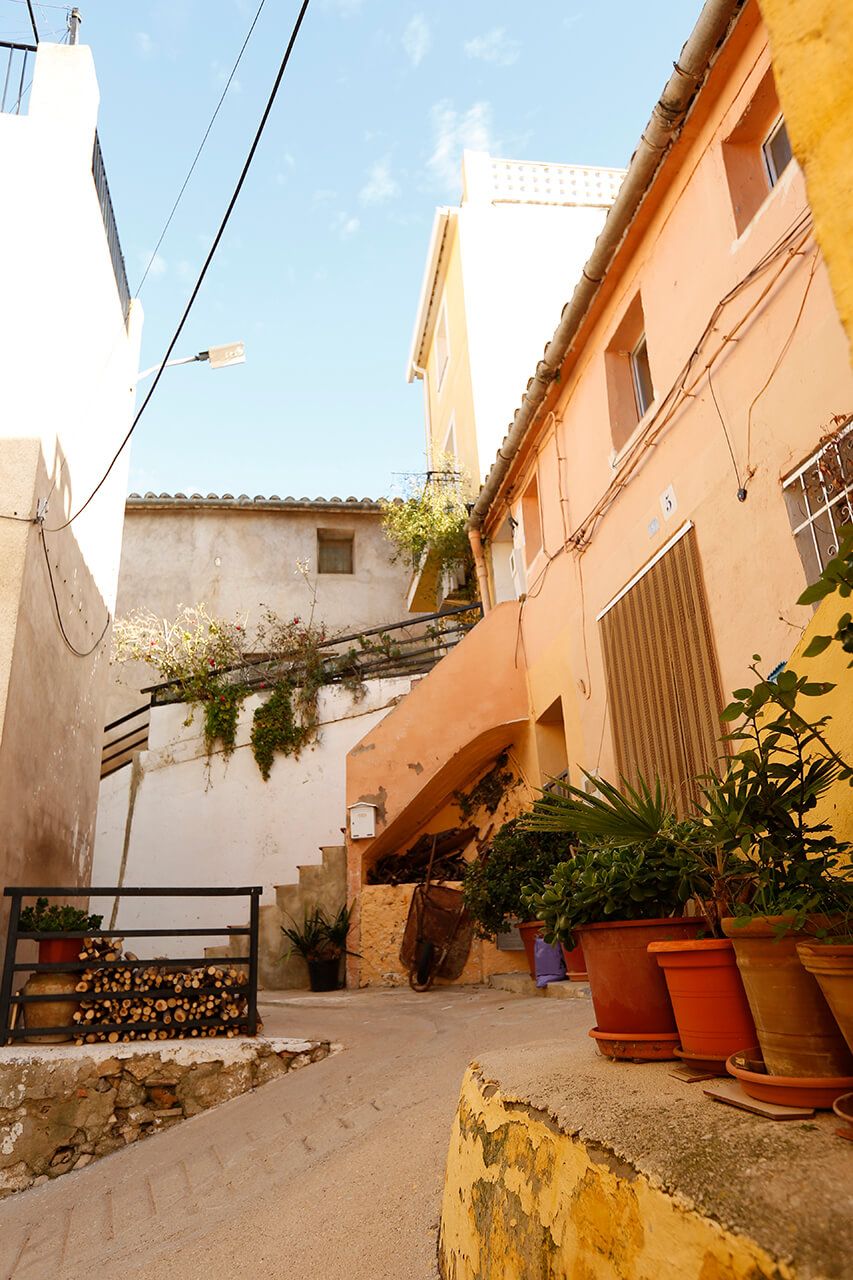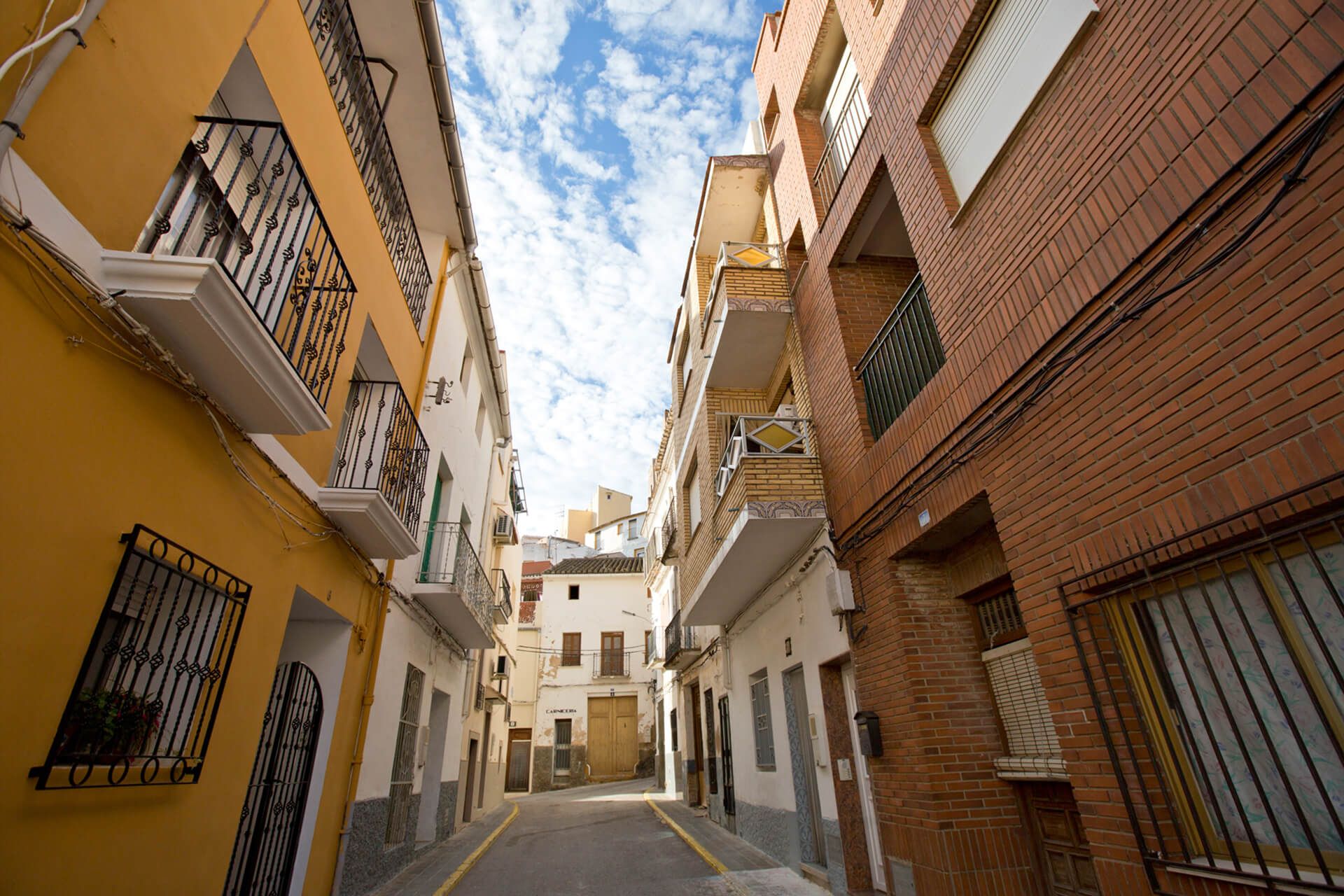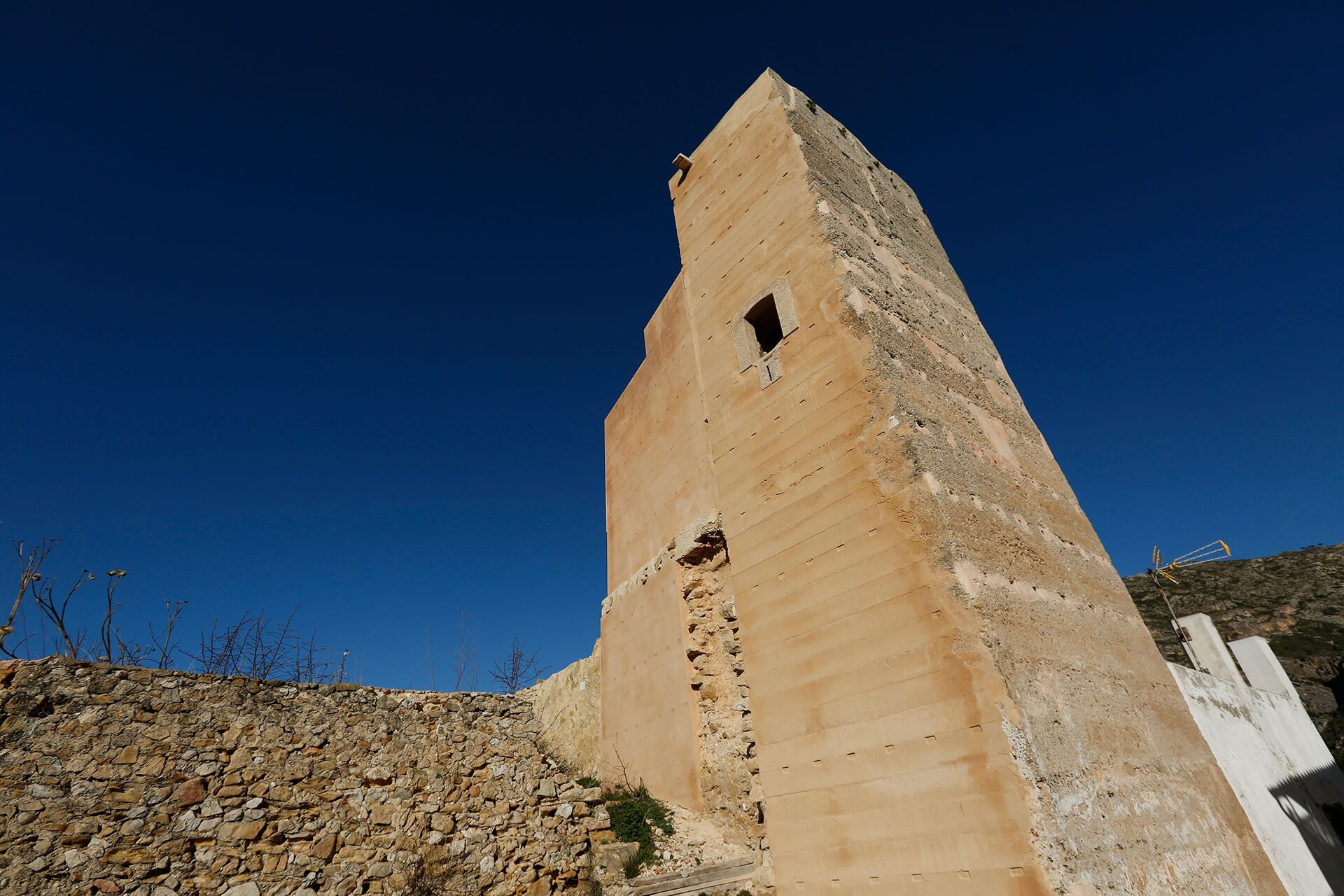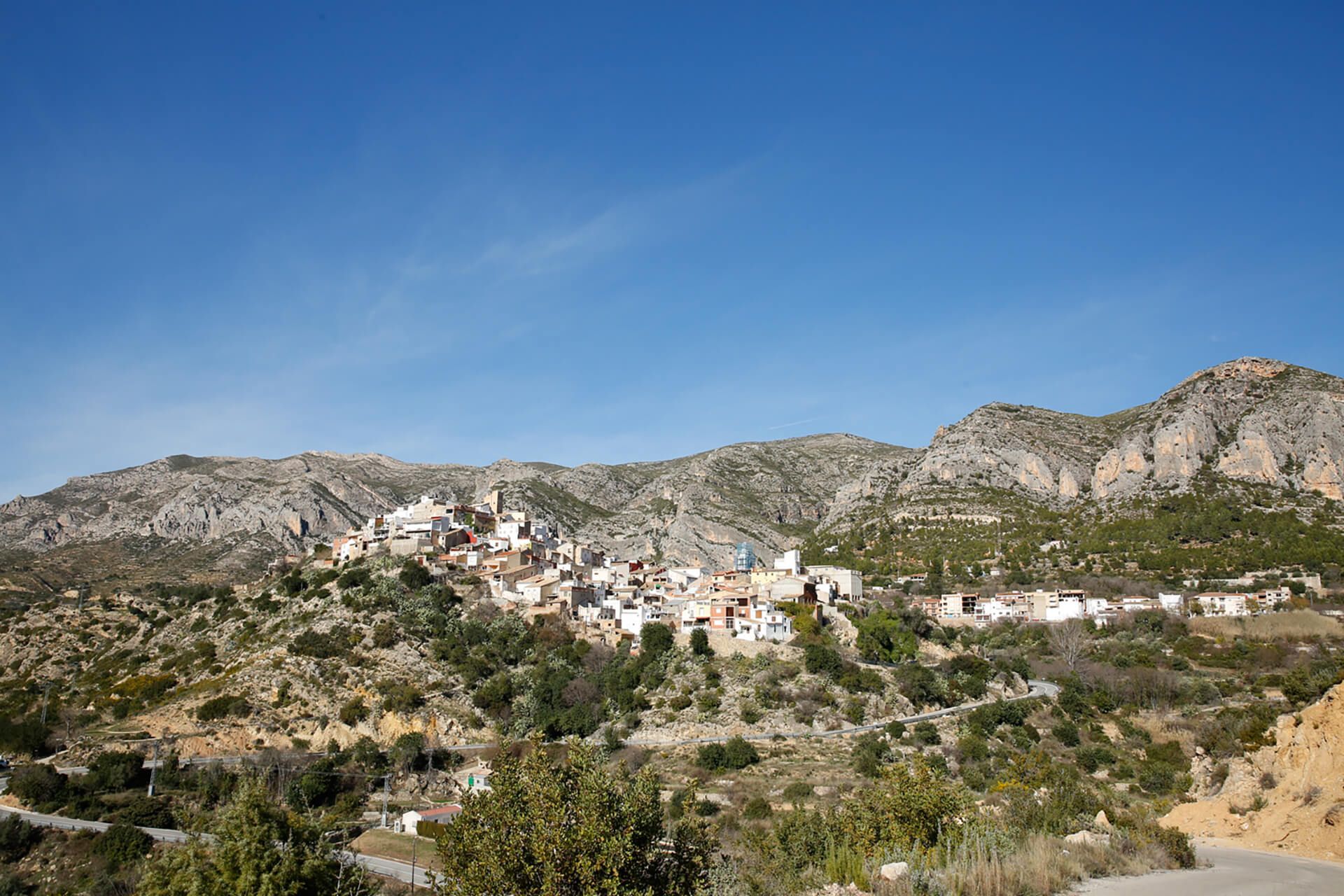Dos Aguas
Dos Aguas is located in the central-western area of the province of Valencia, on the River Jucar.
The municipality is completely mountainous, with the Sierra del Ave range to the north, which also takes the name of the municipality. Its highest summits are the geodesic apexes of third order of “El Ave” (949 metres) and “El Carcamal” (834 m). To the southeast lies the Sierra del Carballón range, which includes the second-level geodesic point of “Colaita” (872 m). The geodesic points of “El Pulpítico (610 m), which lies on the border with Yátova, and “El Madroñal” (582 m) also lie within the municipality. A long stretch of the River Júcar serves as a border with the municipalities of Catadau, Tous, Millares and Cortes de Pallas. The river is canalized along the majority of its winding route. The River Júcar is fed by the ravines of “Fleirón”, “La Murta”, “La Fuentecilla”, “El Bosque”, “La rambla de la Canal”, which at a later point receives the name of “El Jalón” ravine, and “El Cazador”. The ravines “Cairón”, “Garrogueras”, “Perelló”, “el Purgatorio”, “Cal”, “Golondrinas”, among others, flow into the “El Magro” basin. There are a great number of forests in the municipality, most of which are populated with pines and other conifers.
Gastronomy:
“Gazpacho manchego”, “mojete”, baked rice and olive oil cakes with salt and “mojete”. Typical local sweets include Swiss roll, sweet potato cakes, almond and peanut nougat, “mona de pascua” and “torta de llanda”.
Places of interest:
The 17th century Vilaragut Tower is located on a hill overlooking the village. It represents the only remains of the ancient castle known as “The Castle of the Moors”, so named because of the Muslim origin of the village, which participated in the Moorish wars on the side of the latter. It is currently under the protection of the law on Spanish historical heritage.
La Matrona Castle was originally located on a hill about 5 km from the centre of the village. It is currently a ruin, and it is only possible to appreciate the remains of the wall.
Local religious buildings of note include the Parish Church of Our Lady of the Rosary (16th century).
Dos Aguas is a municipality rich in mountain scenery and cave paintings: “Cueva de La Cocina”, “Cinto la Ventan” and “La Cueva de las Maravillas”; “el Naranjo” reservoir, “la Zona Agua Caliente” and “la Sierra del Ave”.
Festivities:
The village’s main festivities are held in August and dedicated to Our Lady of the Rosary and Saint Roche. Events include bull-running, a parade, street dances and fireworks.
During June, the festivities in honour of Saint John are held. This traditional festivity heralds the beginning of summer. The typical festivity food is “el rollo”.
The festivities in honour of Saint Anthony the Abbott, the patron saint of animals, are held in January and include traditional bonfires.
